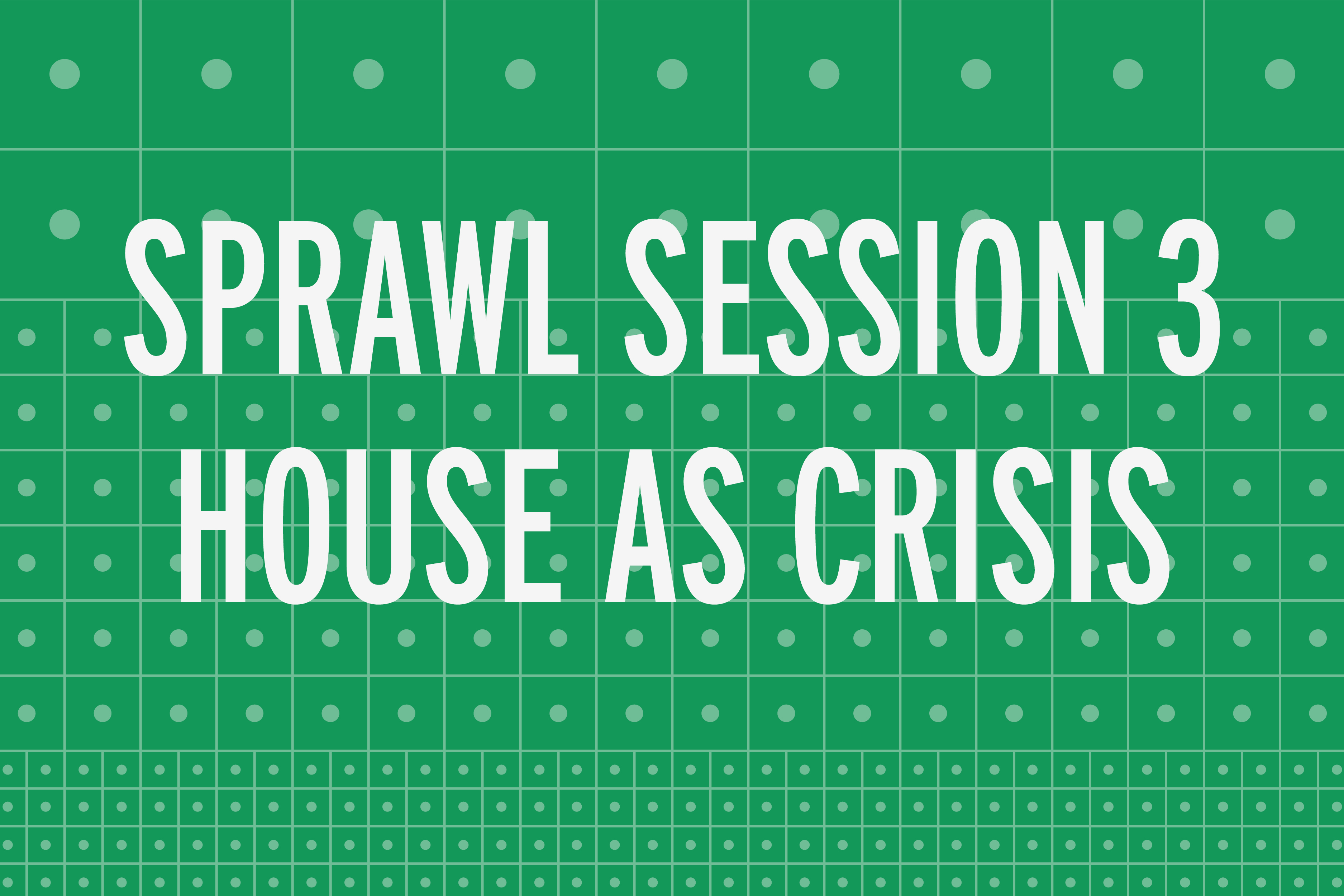Presented in partnership with Laboratory for Suburbia
Organized by Gavin Kroeber and Mimi Zeiger
Sprawl Session 3: House As Crisis
Watch online via Zoom, Vimeo, or Facebook: https://laboratoryforsuburbia....
SCI-Arc is excited to partner with Laboratory for Suburbia to present Sprawl Session 3: House As Crisis, as part of the 50th Anniversary Public Programs series SCI-Arc Futures.
The discussion will feature a remarkable group of architects, designers, and planners, including Keller Easterling, Patty Heyda, James Rojas, Casey Rehm, and Andrew Zago, along with artists Mary Ellen Carroll and Tim Portlock, journalist Gustavo Arellano + more TBA.

In the midst of an unabating housing crisis, stretching from the 2007 collapse of the subprime mortgage market to the current real estate bubble, we must rethink the basic elements of our domestic landscape: A house is not a home, but a financial instrument. A subdivision is not a neighborhood, but the expression of an algorithm. When you drive through suburbia you are scrolling through a spreadsheet. Beginning from the infrastructures, codes, policies, and economies that order the built environment, Laboratory for Suburbia’s next online discussion will explore new ways to see the dwellings that emerge upon that foundation—and the experimental, counter-hegemonic ways these structures can be used, mis-used, inhabited, and hacked. If we are trapped in the house—economically, formally, and literally under pandemic conditions—then what is an architecture of escape?
Laboratory for Suburbia’s Sprawl Sessions is a series of public exchanges considering strategies for site-specific art and tactical design in the complex spaces of 21st-century suburbia. These extended, casual think tanks for critical suburban practice unfold in long-form online conversations that move away from the standard panel format. The intention is not to offer authoritative statements on suburban art and design practice but to open up questions about it, not to rush to fill a gap in practice but to publicly inhabit it. With numerous invited participants and space for an audience of invested practitioners and scholars to engage in dialogue, attendees are encouraged to treat the sessions as salons, dropping in and out as schedules allow (or catch the archived video).
About Laboratory for Suburbia
Laboratory for Suburbia is a paradigm-shifting art and design project addressing the political possibilities of American suburbs.
In the last decade, suburbia has emerged as an urgent site of cultural, political, and spatial contestation—arguably the defining national geography. The fields of art and design, however, have largely failed to engage this critical space, remaining oriented instead toward cosmopolitan destination sites and inner-city creative placemaking. Laboratory for Suburbia invites artists and architects to step into this gap.
What modes of artistic intervention are possible in landscapes of privatization and dispersal? What publics can be assembled in the complex spaces of 21st-century suburbia? How do anti-suburban cultural tropes and disciplinary biases impede the critical imagination? How has a century of suburbanization recomposed not only space but also politics and subjectivity?
A think tank for critical suburban practice, Laboratory for Suburbia is planned to unfold over the next several years, moving from a phase of discussion and public research toward a culminating publication and other outcomes.
Laboratory for Suburbia is a project of The Luminary and presented by PNC Arts Alive!, The Crawford Taylor Foundation, Haus der Kulturen der Welt (HKW), and The Divided City, an urban humanities initiative funded by the Andrew W. Mellon Foundation, a joint project of the Center for the Humanities and the Sam Fox School, College of Architecture and Graduate School of Architecture & Urban Design at Washington University in St. Louis.